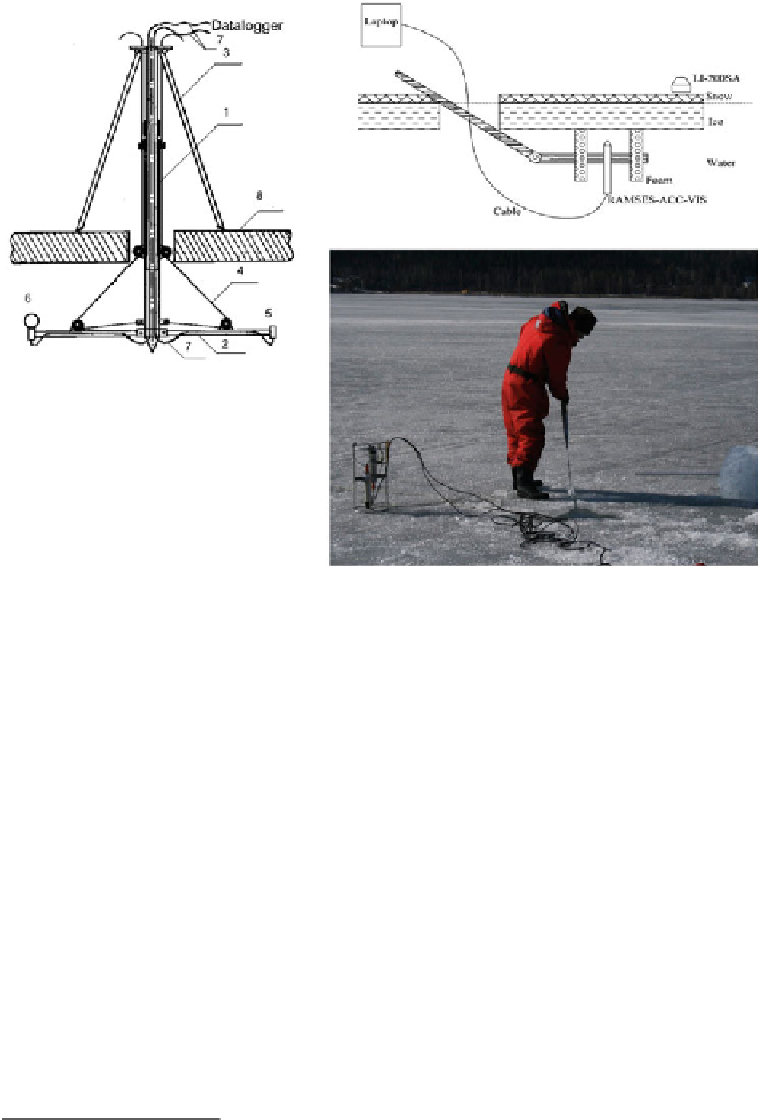Geoscience Reference
In-Depth Information
Fig. 3.18
Solar radiation is the key factor in the ice melting season. Measurements of solar
radiation beneath ice are made using holes and specific techniques to push the light sensor away
from the deployment hole (e.g., Arst et al. 2006; Lei et al. 2011)
ed into three groups: coloured dissolved
organic matter
8
(CDOM), suspended matter, and chlorophyll a (e.g., Arst 2003). CDOM
absorbs short wavelengths and turns the colour of the water toward brown, and chlorophyll
a has two absorption peaks (430
In liquid natural waters, the OAS are classi
690 nm). Humus is a common substance in
the CDOM group in lake waters. Suspended particles show rather smooth light attenuation
spectra, but lakes may show individual signatures depending on their geochemical balances.
The most important optically active substance in a lake ice cover is the gas content. Gas is
contained in gas bubbles, which cause strong scattering, and since the size of the bubbles is
much larger than the wavelengths of solar radiation, scattering is independent of the
wavelength. The colour of lake ice appears black, blue or white, or something between.
Congelation ice has been also called black ice, since with low gas content the ice is thinner
than its optical thickness and backscattering from the ice and underlyingwater remains weak.
When the ice is thicker and the volume of gas bubbles is small, the colour of pure ice appears
blue due to the absorption of red wavelengths when the path lengths inside ice become
long. This is seen clearly in icebergs. At the extreme, snow or even snow-ice is white.
440 nm and 660
-
-
8
Also know as yellow substance in optical oceanography.


Search WWH ::

Custom Search